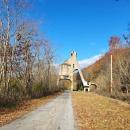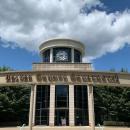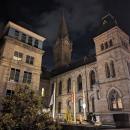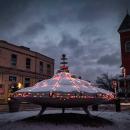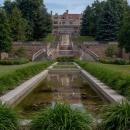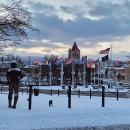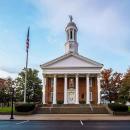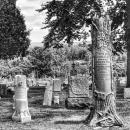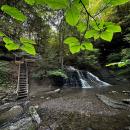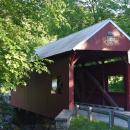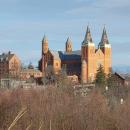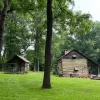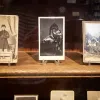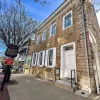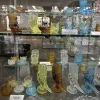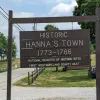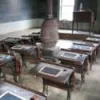Red School House is the first public school in Butler, built in 1838 due to the Public School Act of 1836. It was used as a classroom until 1874, when a larger facility was built.
Southwestern Pennsylvania
The southwestern corner of Pennsylvania is the area that was the original Washington County, formed on March 28, 1781. This is the land to the west of the Monongahela River, from the West Virginia line north and west and south of the Ohio River to the Ohio line.
Parts of the original Washington County are now Greene and portions of Beaver and Allegheny Counties. Both Pennsylvania and Virginia initially claimed this Southwestern Pennsylvania portion of the Commonwealth.
The first National Road, Route 40, came through our area, along with endless visits by the famous surveyors George Washington, Lafayette, George Rogers Clark, James Monroe, Andrew Jackson, and many other renowned people.
Join Western Pennsylvania and Pittsburgh Museums to learn more about the county's notable ancestry—and possibly your own.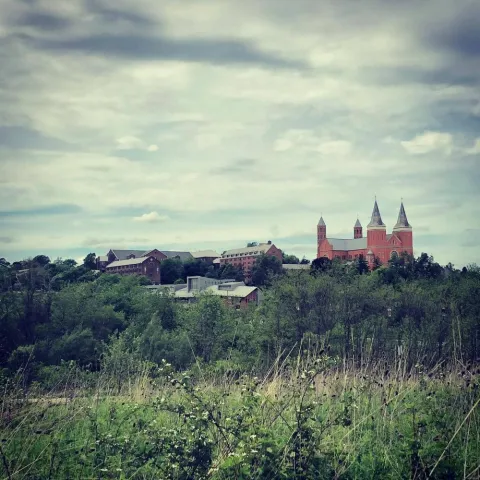
Museums
Founded in 1849, Waynesburg University (college) has a rich historical tradition. The University is proud to share its history and local history in the Paul R. Stewart Museum, located in the basement of Miller Hall on the main campus.
The Connellsville Canteen is a recreated "Business and Occupation". A train Station that commemorates the women who served the troops on trains passing through during World War II.
The original cabin, built by the Cooper family in 1810, was used as a county homestead. It was enlarged after the Civil War, and family descendants remained in it until 1963. In 1976, Cooper Cabin was deeded to the Butler County Historical Society.
The Photo Antiquities Museum of Photographic History boasts an extensive collection of photographs, primarily dating from the 1840s to the 1950s. Photographs from the archives are now being cataloged and digitized into a computer indexing system.
G Squared Gallery is a decorative shop and gallery located in Ligonier. Nicely nestled into the corner between Citizens Bank and The Creamery, you can’t miss its vibrant storefront decor and festive window.
David Bradford was a successful lawyer, businessman, and Deputy Attorney General of Washington County, Pennsylvania, when his house was completed in 1788. David Bradford and his family lived in this house from 1788 to 1794. By 1794, he had become a prominent figure in the "Whiskey Rebellion".
Soldiers & Sailors Memorial Hall and Military History Museum stand as a tribute to Pennsylvania's servicemen and servicewomen whose bravery has safeguarded the freedoms we enjoy.
McCarl Industrial & Agricultural Museum of Beaver County offers displays that demonstrate the history and development of manufacturing in the County. A forge demonstrates some of the basics of manufacturing.
On a chilly, sunny Monday morning in late October 2008, a crowd gathered on the corner of 6th and McKean in the community of Donora, Pennsylvania.
Dedicated to education, research, and conservation, the Pittsburgh Zoo & PPG Aquarium participates in 25 Species Survival Plans and proudly exhibits 32 threatened or endangered species. Its expansive, naturalistic habitats offer immersive encounters with wildlife from around the globe:
Built in 1802, Greersburg Academy is the oldest public building in Beaver County and the oldest advanced education institution North of the Ohio River.
The first phase of the Duncan and Miller Glass Museum's history began in 1975, when two rooms in the Washington County Historical Society building, the LeMoyne House, became home to the young museum.
The Bible Lands Museum's exhibits offer glimpses into life from prehistoric times into the Middle Ages. Artifacts include many forms of pottery; objects made of stone, bone, alabaster, faience, glass, and metal; and rare examples of ancient basketry, leather, and textiles.
The birthplace of the Seamless Tube Industry, named after the inventor of barbed wire, Isaac Ellwood, and developed by the Beaver Falls wire manufacturer, Henry Hartman.
Harlansburg Station is located in a replica train station with four Pennsylvania passenger cars at the intersection of Route 19 and Route 108, just east of New Castle in Harlansburg, PA.
Founded in 1773, Hanna's Town was named for its originator, Robert Hanna. It was the foremost County Seat of Westmoreland County and the site of the first English court west of the Allegheny Mountains.
The South Side Historical Village is located in Greene Township at the Hookstown Fairgrounds in Hookstown. It is an interpretation of Early American life in the South Side region of Beaver County.
The Compass Inn is a place to receive an informative and entertaining tour by costumed docents that tells the story of transportation and everyday life in the early 1800's. The tour delivers "history with a smile" by incorporating a generous sprinkling of etymology (word and phrase origins).
Westmoreland Museum of American Art has a significant and distinctive collection of paintings, sculptures, furniture, and more. Its collection beautifully describes the heritage of our nation and region and is designed to enrich, enlighten, and delight viewers of all ages.
Established in 1985, the Monaca Community Hall of Fame features over 100 plaques honoring individuals who have made significant contributions to the community or the country in various fields, including civic accomplishments, fraternal organizations, sports, and professional endeavors.
Albert kept his discovery of Native Peoples at the Rockshelter a secret for over 18 years after the discovery. He waited, searching for the right archaeological team to excavate his land properly.
The Children's Museum of Pittsburgh is reaching Great Heights with exciting exhibits and programs for the young and young at heart.
The Pennsylvania Maple Museum showcases Somerset County's sugar-making tradition, a sweet tribute to centuries of craftsmanship, community, and cultural heritage.

